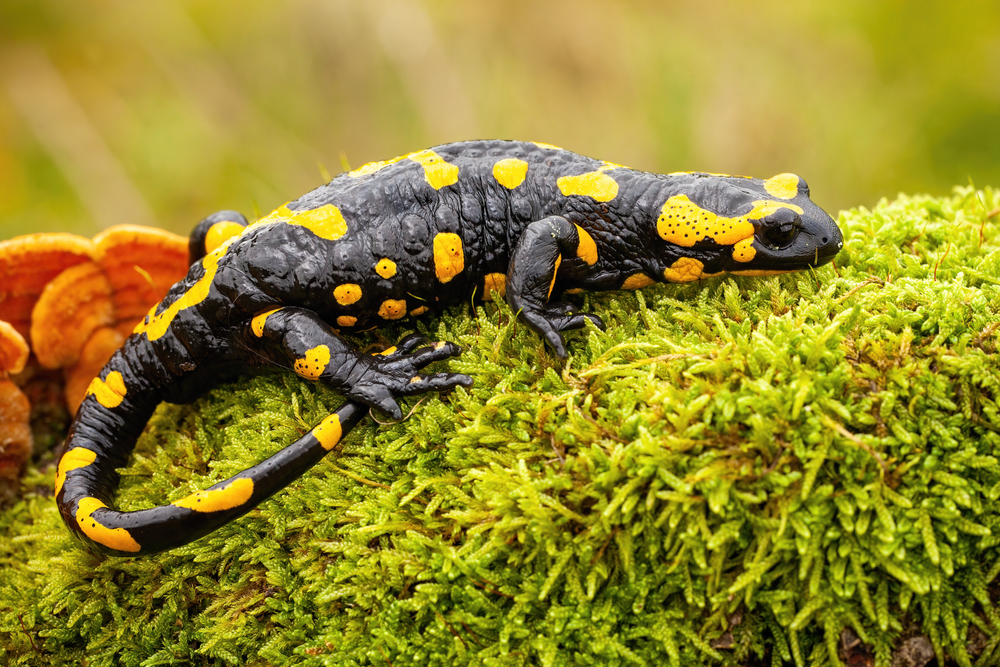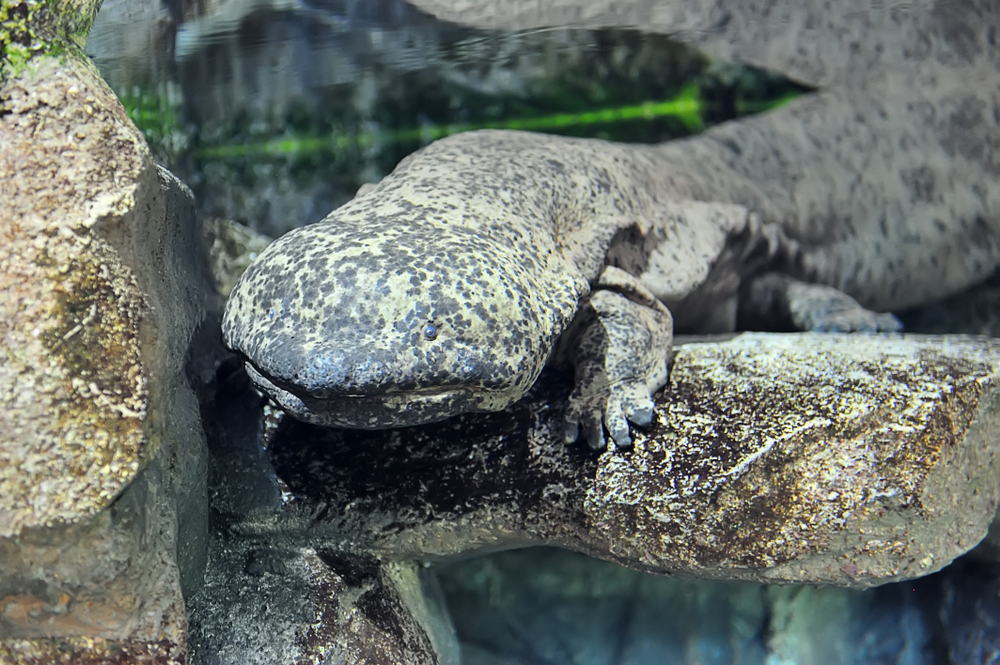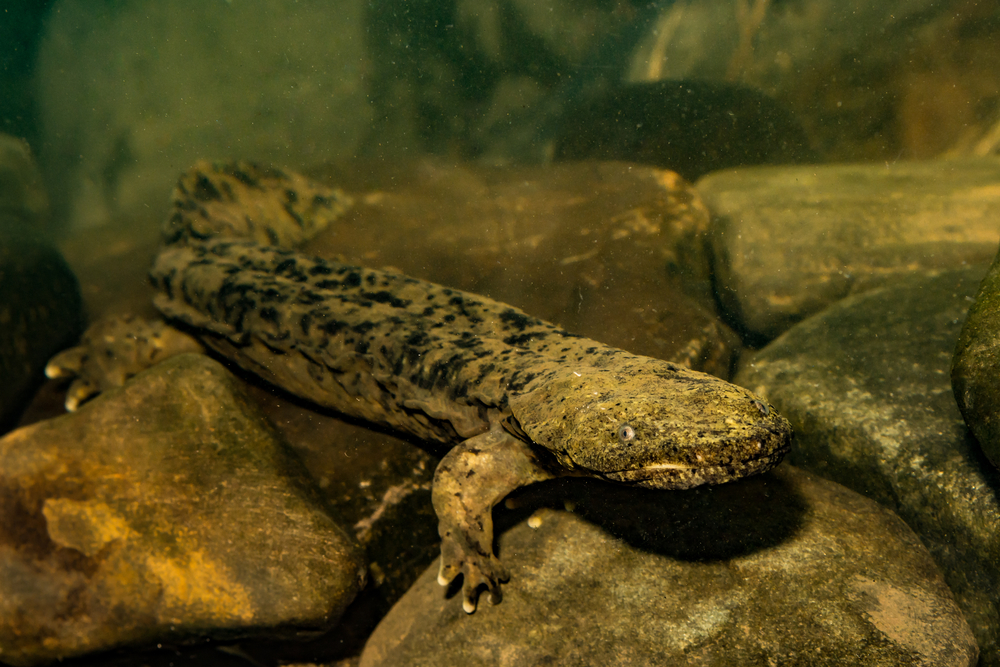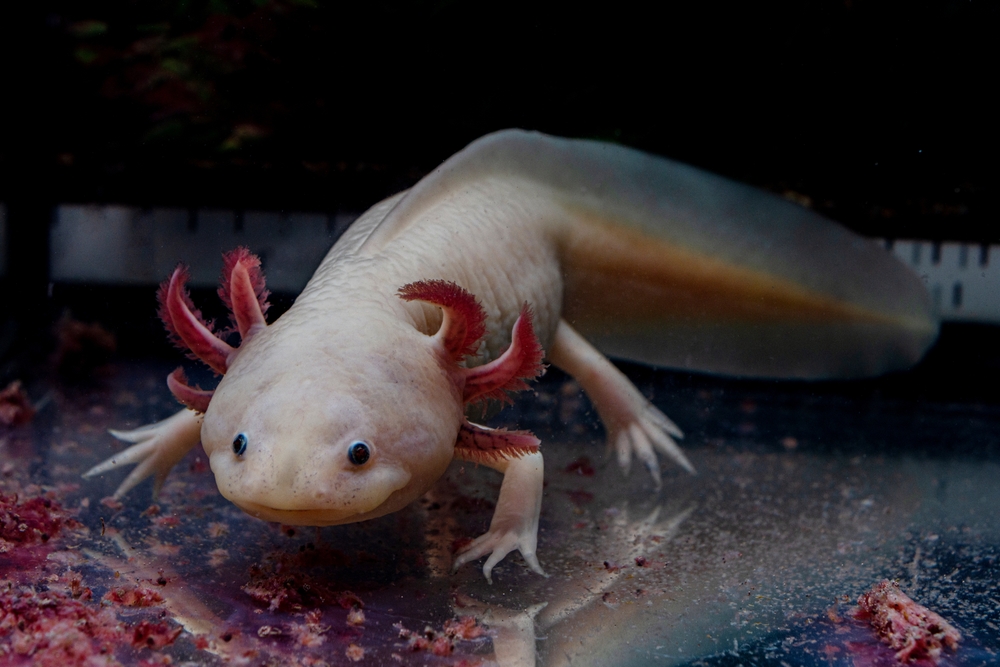Uniqueness
Bright Aposematic Coloration:
The fire salamander (Salamandra salamandra) is instantly recognizable for its striking black body with bold yellow, orange, or red markings. This coloration isn’t just for show—it’s a classic example of aposematism, a visual warning to predators that it is toxic and dangerous to eat.
Toxin-Secreting Skin Glands:
Fire salamanders produce potent neurotoxins, including samandarine, from parotoid glands located behind their eyes and along their body. These toxins can irritate skin and mucous membranes and can be fatal to small predators. They are among the most chemically defended amphibians in Europe.
Internal Fertilization with Live Birth:
Unlike many amphibians that reproduce via external fertilization, fire salamanders engage in internal fertilization. Females give birth to live aquatic larvae—and some subspecies even birth fully metamorphosed juveniles directly on land, a rare trait known as viviparity.
Terrestrial Lifestyle:
Fire salamanders are one of the few amphibians in Europe that are almost entirely terrestrial as adults. They live in moist, shaded forests and venture out mostly at night or in wet conditions. Their dependence on forest-floor ecosystems distinguishes them from more aquatic or burrowing salamander species.
Extraordinary Longevity:
They are exceptionally long-lived, often surviving 20+ years in the wild and over 50 years in captivity—one of the longest lifespans known in amphibians. This trait is supported by a slow metabolism, delayed maturity, and strong natural defenses.
Symbolic and Cultural Status:
In folklore, fire salamanders were believed to be born from flames due to their emergence from logs thrown into fires. They have inspired legends, coat of arms, and myths throughout Europe for centuries and are often associated with fire resistance, rebirth, and protection.
Summary:
The fire salamander is an extraordinary amphibian distinguished by its vivid warning colors, toxic chemical defenses, internal fertilization, and terrestrial viviparity. Its ancient lineage, remarkable longevity, and cultural symbolism make it one of the most unique and iconic salamanders in the world.






































































